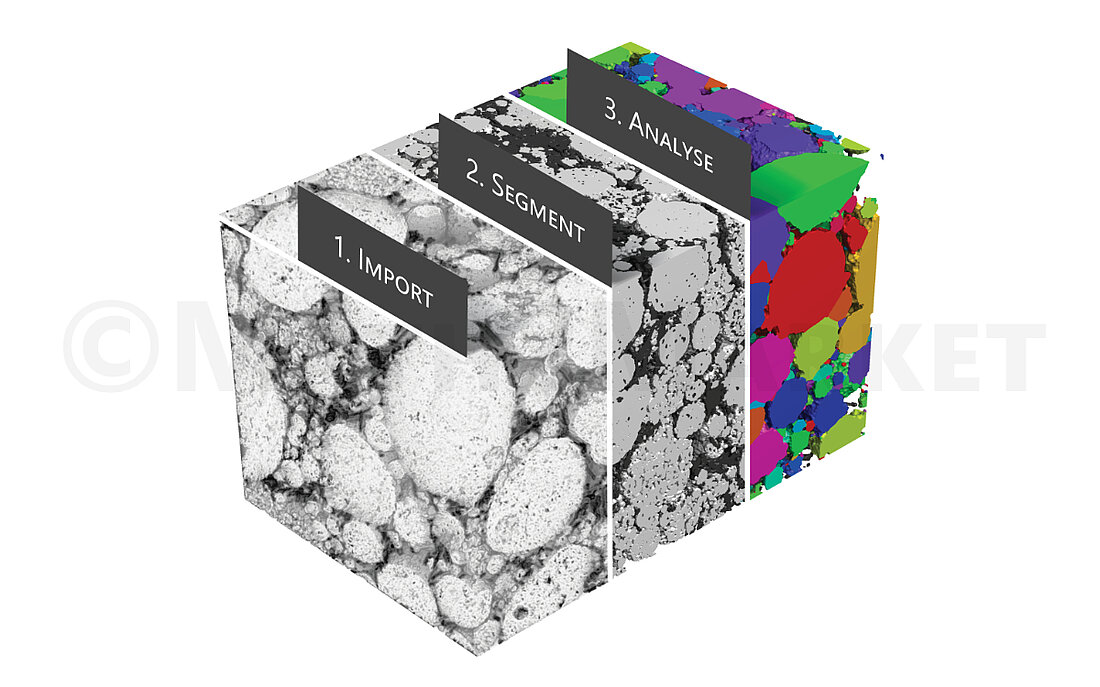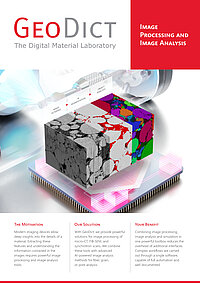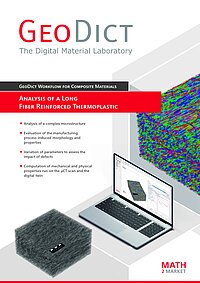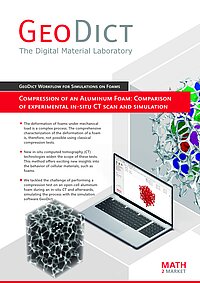For the analysis of materials, three-dimensional imaging by micro-computed tomography (µCT) and focused ion beam scanning electron microscopy (FIB-SEM) has emerged in recent years as a highly accurate and increasingly affordable method to complement laboratory experiments.
Unique insights into the microstructure of materials and, thus, into the way they work and the processes involving them, can be gained through the digital representation of the materials. These insights have already led to great innovations in product development in many industrial sectors today.
From original material to digital material model
The challenge is to correctly segment the 2D- or 3D-data of the original material as a digital image. This requires suitable image processing tools and the right segmentation methods. Finally, validation procedures must be used to determine the correlation between the original material and its Digital Twin.
GeoDict - The all-in-one simulation software solution
GeoDict offers the complete digital solution to get quickly and easily from original material to Digital Twin.
Powerful image and segmentation filters in the ImportGeo-Vol module help in preparing the image data in the best possible way for digital material analysis. Of course, the quality of the segmented data strongly depends on the quality of the source data. For the analysis of the 3D image data, the components of a material's microstructure can be identified and analyzed within a very short time thanks to Artificial Intelligence.
GeoDict completely covers this complex workflow and also offers the possibility to fully automate the defined work steps.
From material scan to digital material
Please note that after activating the video, data will be transmitted to YouTube.
More Information
Data import and image filter (ImportGeo-Vol)
The ImportGeo-Vol module is used to import 3D images e.g. as µCT- or CT-scans, synchrotron CT, or FIB-SEM.
To improve the quality of the imported images, ImportGeo-Vol also includes powerful image filters, for example to reduce image noise, sharpen grain boundaries, or remove image artifacts. The better the filtered image, the more precisely the data set can be segmented.
Image segmentation (ImportGeo-Vol)
Image segmentation assigns unique gray value ranges to the objects in the image. For example, gray values between 0-11500 are considered as pore space. Various proven methods are available for this in ImportGeo-Vol, such as the Otsu method, KMeans method, as well as innovative AI segmentation filters. If the gray value ranges of a material are known, they can also be entered manually in GeoDict. This step can be automated with the workflow macros available in the GeoDict 2021 release.
Analysis of geometric properties of materials
Depending on the type of material, the material analysis calculates the percentage of solid materials (e.g. fibers, grains), binders or the pore space and determines properties such as diameter, orientation or volume in the 3D material model. Artificial Intelligence in the form of neural networks in GeoDict helps in the characterization of complex structures - quickly and precisely.
Examples:
Analysis of physical properties of materials
The physical properties of the material can be quantified and predicted based on the 3D material models with suitable GeoDict modules from Simulation & Prediction.
Examples:
- FlowDict for the calculation of the flow properties
- ElastoDict for the calculation of plastic deformations and resulting damages
The determination of material properties using simulations reveal a thorough picture of the material. Simulations disclose structural insights, underlying processes, and the interplay of material properties that would otherwise be understood only to a limited extend or would be impossible to reach through laboratory experiments.
Examples:
- Determination of the filtration performance of a fiber medium,
- Simulation of charging cycles on an electrode,
- Determination of the conductivity of a battery,
- Determination of the relative permeability per two-phase flow





